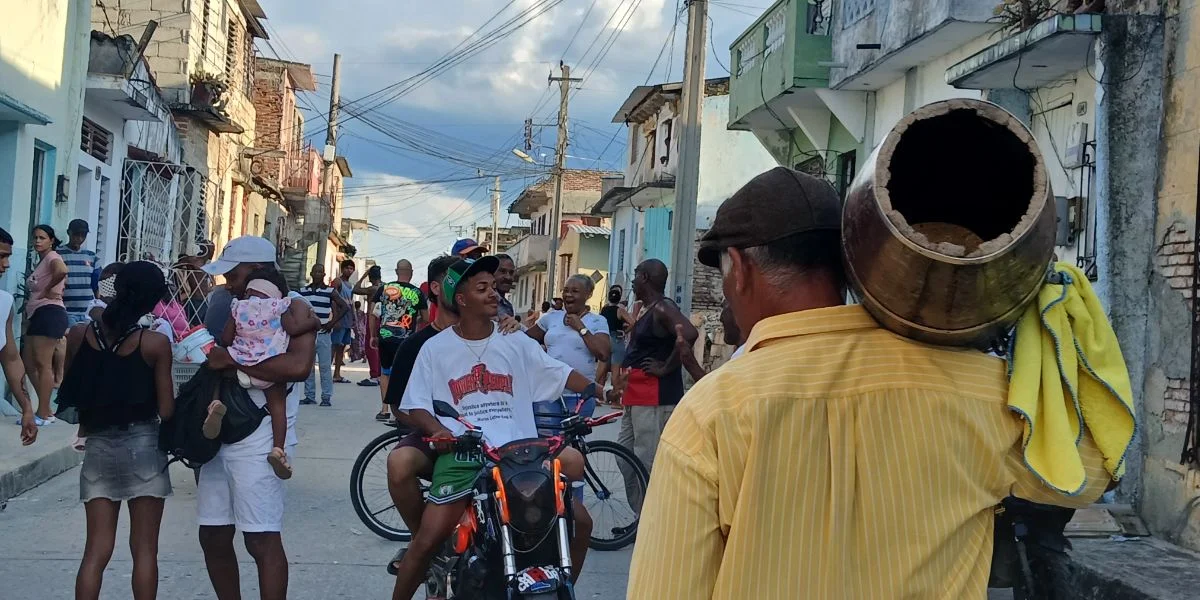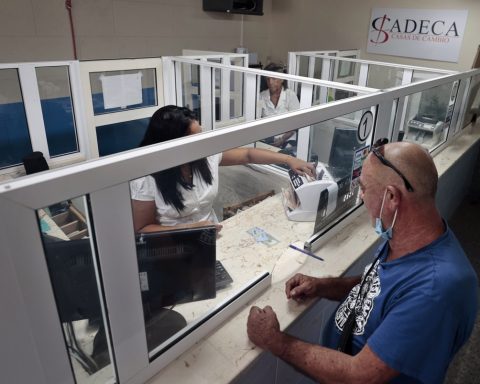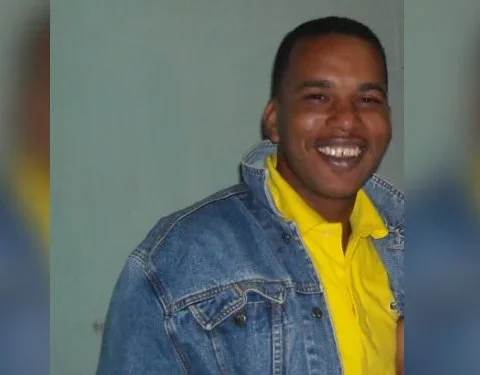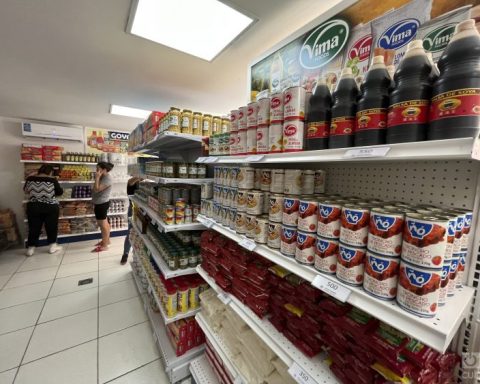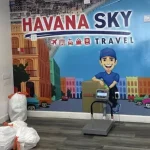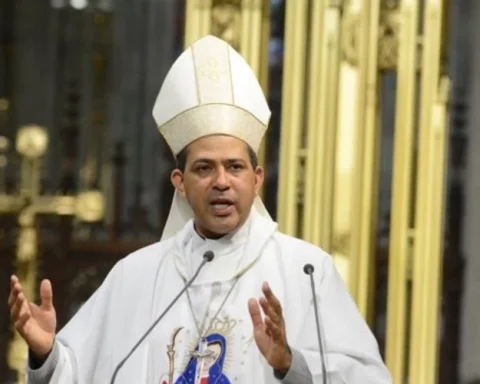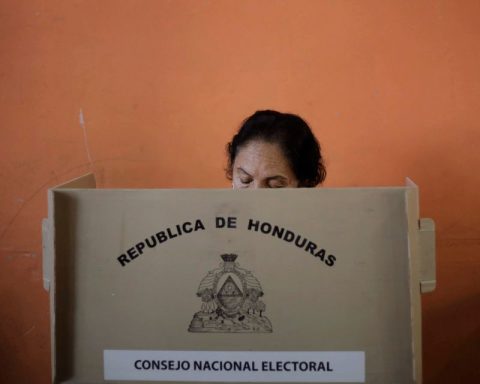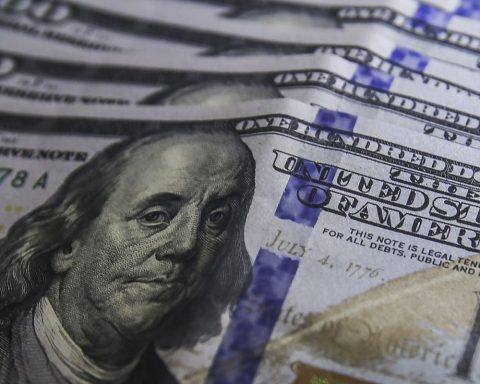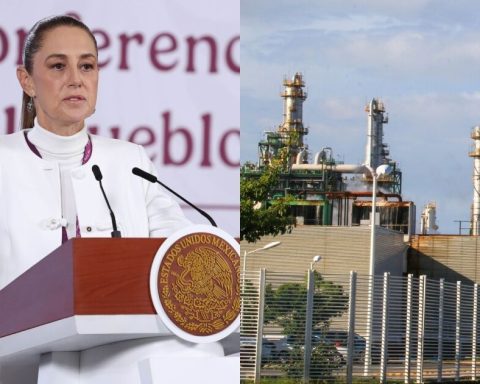SANTA CLARA, Cuba. – It is Saturday at noon and from a balcony you can hear the voice of “Water!” which is repeated by word of mouth throughout the crowded street, followed by a resounding movement of people who protect their merchandise behind closed doors. The solidarity notice has arrived on time: in the distance, almost six blocks away, a patrol is moving slowly inspecting one of the main arteries of the district that is officially named Raúl Sancho, but that every Santa Clara resident knows as El Condado.
From the vicinity of the Central Highway to the ring road stretches the most picturesque neighborhood of Santa Clara, to which musical themes, documentaries, master’s theses and black literature novels have been dedicated. It frequently transcends the networks due to the cacerolazos due to blackouts, and on YouTube appears outlined as one of the “most dangerous” territories in Cuba, although in reality it has been an adjective used throughout its history to marginalize it.
It is said that El Condado owes its name to a Spaniard with the same noble title who acquired the land at the beginning of the 18th century, a little far from the central square at that time. Later, the benefactor Marta Abreu de Estevez He chose those domains to found the nursing home on San Miguel Street and one of the four public laundries serving humble women.
Much of the unfounded prejudices about this settlement come from some press releases from yesteryear that referred to the existence of the most famous brothels in central Cuba and the migration of entire families from the Escambray hills. The official Cuban encyclopedia Ecured mention that “it was a shelter for criminals, prostitutes and the poor of the city” and that with the advent “of the Triumph of the Revolution it received the benefits of social change.”
Another community study which dates back to the early 90s of the last century, reports that “crimes of robbery with force” were common there, to the point of occurring 10 to 12 a month, and the presence of gangs that solved their problems “with a clean machete, with stabbings and missteps.” The official press also has limited that it is a community marked by “a complex social network” where many “dysfunctional families” coexist.


However, its own people mention that the bad reputation attributed to El Condado is more in line with the maxim of “create fame and go to sleep.” Also, a certain contempt bordering on racism or prejudices regarding Afro-Cuban religious practices, which proliferated there amid the forced ostracism of the 70s and 80s of the last century.
In El Condado it is common at any time of day to hear the echo of drums from a corner rumba or a Yoruba party, a common ceremony in these parts. “Even very white leaders come here to cleanse themselves,” says Reinier, a nurse and practitioner of the Regla de Ocha, born and raised in the area. “The same thing that happens in this neighborhood can happen in any other. Like in all places there are good and bad people.”
The Condado also functions as a kind of neighborhood clan where some protect each other and where “what little one has is shared so that misery affects less per head,” as described by María del Carmen, a resident of the Amparo Street, another of the arteries that make up the district. “When they mess with one, 20 come out to defend him. Half of the Santa Clara Police have left here; “They grew up right here killing dogs,” says this woman and agrees that El Condado, more than a conflictive place, is a free zone for business.

Pablo Manso, another resident of the neighborhood, adds that, in fact, it has always been a fertile ground for entrepreneurship by “fighting” people, hence the popular saying that “whatever you don’t find here, don’t look for it elsewhere.” . Long before virtual “revolicos” and candongas existed, this neighborhood of Santa Clara was the reference point to acquire “on the left” everything that was scarce in the State stores and whose sale was limited or prohibited.
In the circuit that the populace baptized as Calle 8, it was created from the so-called Special Period an illegal micromarket where everything from missing medicines, clothing and shoes brought from abroad to beef and horse meat that were practically sold without much concealment were found.

On San Miguel Street itself, the one that runs through the district from end to end, there are dozens of stalls, some more prosperous than others, selling both food and drinks as well as religious items. “Here is to” agrees Kendry, a 22-year-old young man who sells fruit and vegetables from a traveling cart. “The thing about people is to look for their four pesos, they are there to survive, and that crime that existed before is over.”
Contrary to what its name indicates, El Condado does not have luxury residences or chalets with gardens: it is distinguished towards the interior by a string of precarious houses, some made of wood and dirt floors, in which up to two families usually live together. in a small space of a few square meters. Many of its streets are graphic testimony of the humility of a good part of its people and the economic prosperity of others. New well-equipped two-story constructions also coincide in this neighborhood with the so-called “arrive and put in” without water or sewage service.

The less central embankments are crossed by ditches coming from the nearby river that tend to overflow every time a storm occurs. The official medium Granma recognized In a 2021 report, in fact, the area presented “leaks everywhere, deteriorated hydraulic installations, lack of paint and accumulated housing problems,” the same problems that persist to this day.
“Here you live as you can, in the struggle. There are very poor people who even lose their mattresses when ditches and pits overflow. Ah, but every time someone important comes, they clean the streets or fix up a little park,” says Yusniel Cueva, a young man who introduces himself as a “businessman,” raised in the neighborhood that, he says, he will not change for any other.

Over the years, El Condado has not managed to get rid of the “hot zone” sign, despite the fact that it is far from being an unsafe or dangerous place and it is a place of people who have managed to get ahead from a more unfavorable context, which has largely conditioned the “arrested” behavior of those who reside there. Perhaps it is that old stigma that contributes to the fact that they are hardly affected by prolonged blackouts or that the winery’s errands arrive there first than to other parts of the province.
